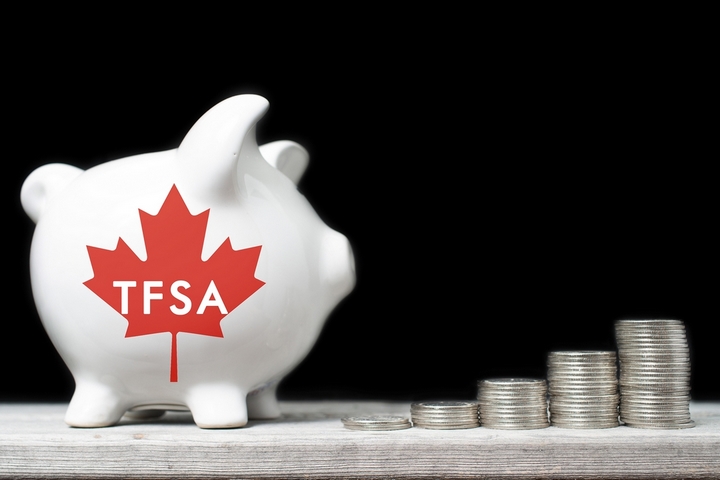
The financial services sector is selling more products than ever before. Whether it is your local branch or a Wall Street investment house, you can access any number of investment vehicles and markets. There really is no excuse to not be exposed to a dividend stock, an exchange-traded fund, or even a GIC.
Of course, some people are so terrified of equities, real estate, and bullion that they prefer to just put their hard-earned loonies and toonies in a low interest savings account. That’s not the way to go, but can you invest without the risk?
Here are the seven best low risk investments for high returns:
1. TFSAs

Since 2009, the Canadian government has allowed you to save thousands per year without paying a tax on it. The contribution limit is $6,000 in 2019 (it was $10,000 in 2015). Called a tax-free savings account (TFSA), you can park your loonies and toonies in this investment instrument and earn monthly interest without fears of penalties. The TFSA can be used for savings, but it can also be utilised as a low risk investment for mutual funds, stocks, bonds, and guaranteed investment certificates (GICs).
You just need to be careful that you stay within the limit, otherwise you will be punished with a 1% over-contribution monthly tax.
2. RRSPs

For more than 60 years, registered retirement savings plans, or RRSPs, have been all the rage. A tool to encourage savings by employees and self-employed people alike, millions of Canadians have taken advantage of the program, mostly for the tax advantages.
Under the account, all your contributions to RRSPs can be deducted from your taxes, and any income earned from these RRSPs are not taxed. However, if you withdraw these funds, then you will be hit with a levy, which most likely occurs when you retire.
There are also four types of RRSPs:
- Individual: A single account holder
- Spousal: A higher earner contributes to an RRSP in their spouse’s name.
- Group: An employer arranges for the employee to make contributions through your scheduled payroll deductions.
- Pooled: RRSPs created for self-employed people and employees and employers in small businesses.
3. GICs

We understand if you’re petrified of putting your money into the stock market these days. Triple-digit losses, volatility, and a bubble that appears to be deflating; there are many reasons to sit on the sidelines. But does that mean you cannot still make your money work for you? Nonsense!
A guaranteed investment certificate (GIC) is one of the most popular investment products around, especially with interest rates gradually normalizing as of late. You do not need to be concerned about losing your cash because the rate of return is guaranteed. It operates in the same way a savings account works, but you cannot withdraw at anytime, otherwise you will pay a penalty. The GIC is one of the best low risk investments available.
Moreover, your GIC can be used as a TFSA or an RRSP.
4. Mutual Funds

Many people want to play the market, but they have zero clue what stocks to buy and they don’t want to spend the time required to purchase the right stocks. Well, there is something for you: mutual funds.
A mutual fund is comprised of dozens of different stocks, so you don’t need to hold just one. For instance, if you purchased an energy mutual fund, then you will have your principal invested in a wide array of energy companies. Or, if you have acquired an emerging market mutual fund, then your cash will be parked in government bonds or companies operating in emerging markets.
There are two ways to make money and profit from high returns on a mutual fund:
- Dividends
- Unit price increases.
What’s also attractive about mutual funds is that they are professionally managed. The data is clear that mutual funds typically outperform the novice investor who buys stocks.
5. Dividend-Paying Stocks

The objective for any investor is to accumulate enough shares in stocks that they can live off of the dividends – a sum of money paid to shareholders every quarter. Of course, if you’re a middle-income trader, then this dream cannot be attained instantly; it will require years of investing.
Some argue that investing in dividend stocks is risky, but that’s only true if you’re looking for quick cash and not a long-term asset. For example, Walmart is a value stock to own in your portfolio for many years because it doesn’t experience immense volatility and pays shareholders $0.52 each quarter. This makes dividend-paying stocks one of the best low risk investments for high returns.
6. Annuities

Annuities are financial products sold by banks and life insurance companies to individuals who invest a specified a sum every month. The financial institution accepts these monthly payments, and then establishes an income stream at a later date for an agreed set of time (10 years or 20 years).
These are extremely popular for retirees, individuals who came into a large sum of money, and the wealthy.
Not only is it a low-risk investment, it is also a protection. Think of the lottery winner’s curse: the lottery winner typically takes the lump sum payment, but then blows the entire pot in a short amount of time. They would have been better off accepting the monthly or annual payment.
7. Cash Value Life Insurance

Cash value insurance is permanent life insurance that offers coverage for the duration of the policyholder’s life. What makes it more attractive than your typical term insurance is the cash value savings feature that can be accessed as a source of cash, a loan, or to cover policy premiums. Moreover, the cash value earns a small rate of interest that serves as a tax deferral.
Simply put: You have life insurance to ensure your family is financially secured and you can have access to the cash portion of your lifetime policy.
All of the studies point to a dangerous trend: young people are not saving and investing, though they do prefer to save for a rainy day then put a chance on some Silicon Valley stock. It seems they are averse to risk and have seen the damage done to their parents and grandparents in the dot-com crash, the housing crisis, and the Great Recession.
But not all investments are risky affairs. When you pick low risk investments, you can still have your money work for you. You gain access to global financial markets, and build future security without fearing that you’re going to be wiped out tomorrow if the Dow Jones Industrial Averages (DJIA) crashes 930 points tomorrow. Do your homework, ask the right questions, and take a long-term approach to investing – that’s how you balance risky investments for high returns.